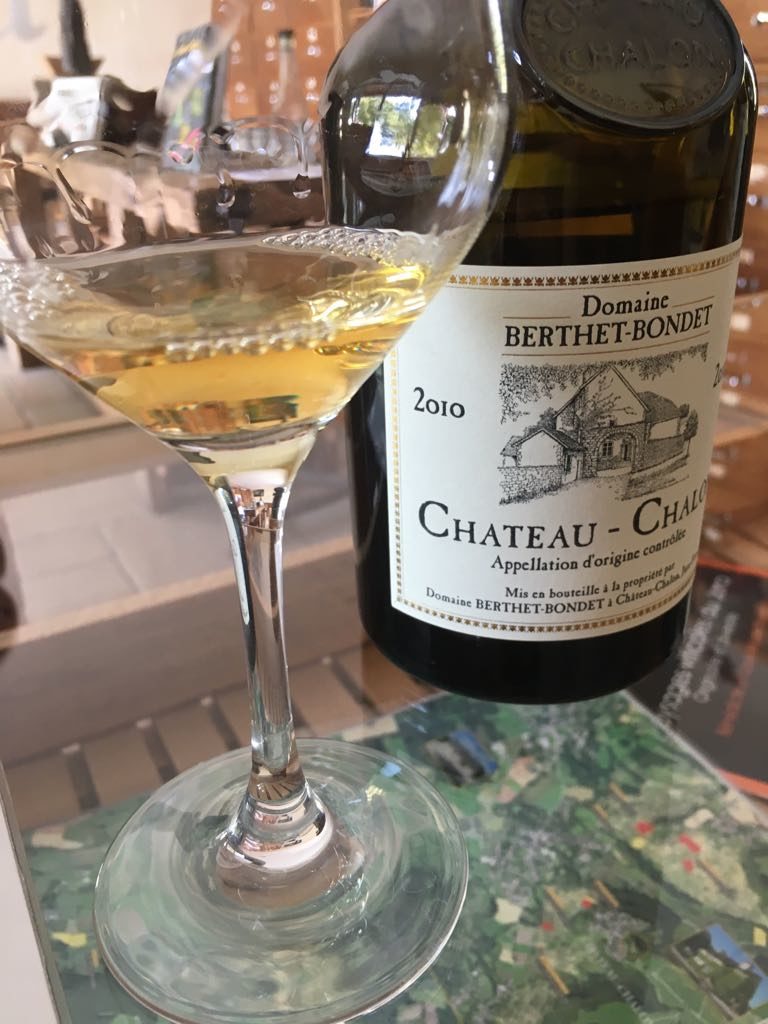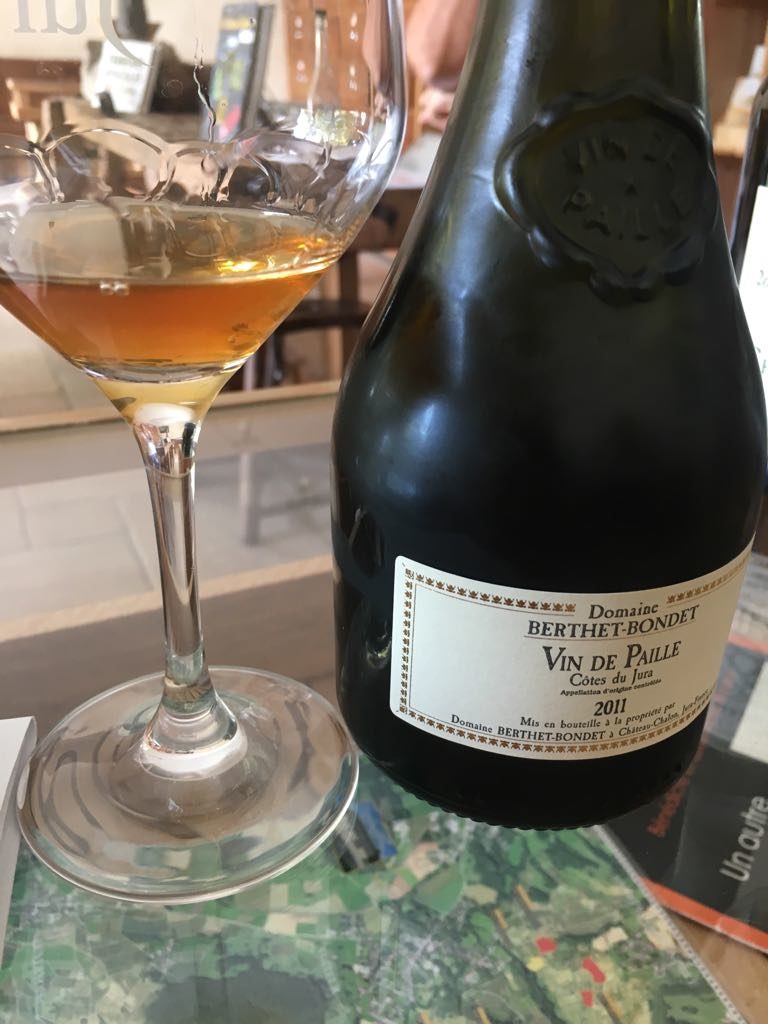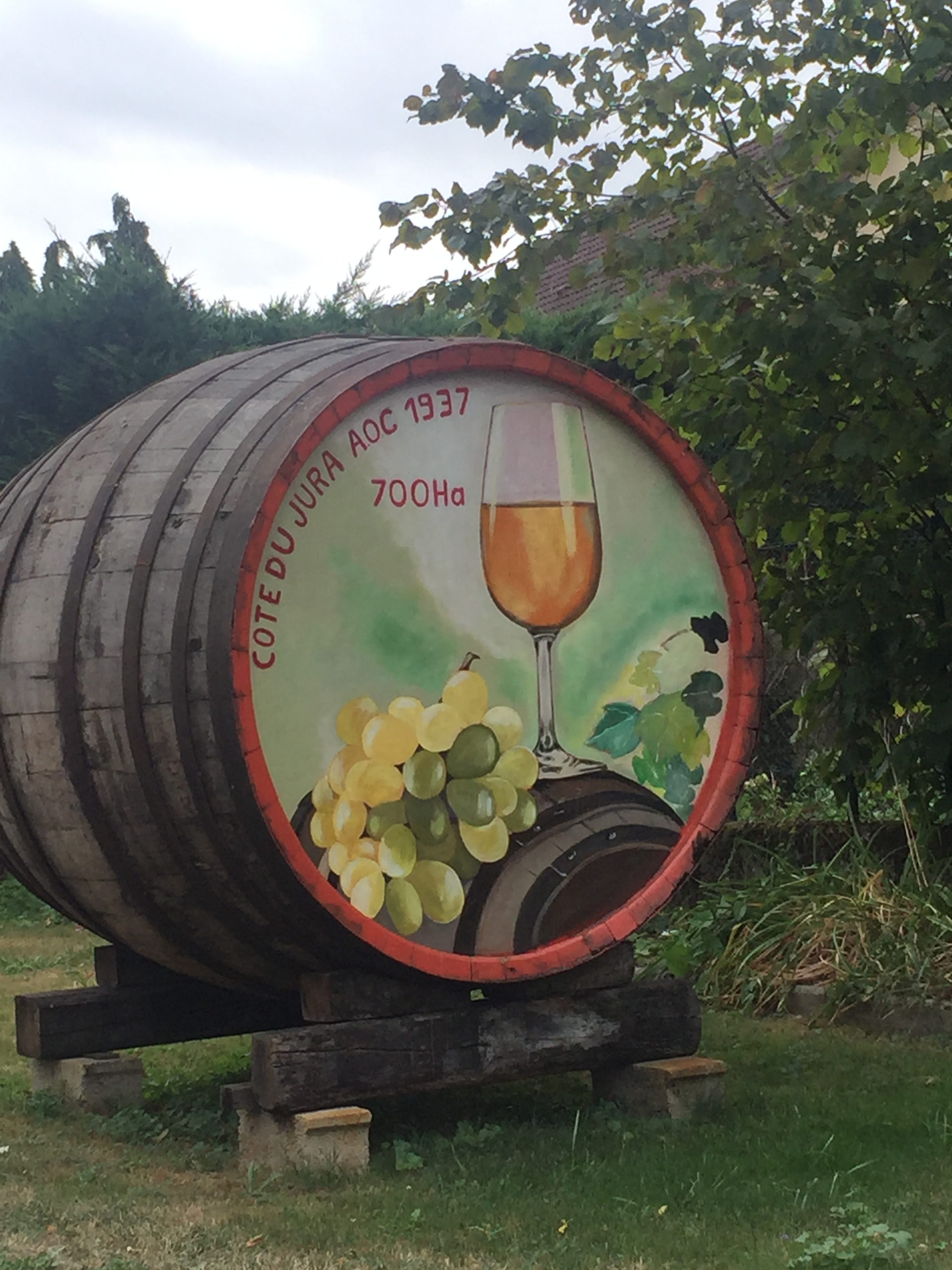ENGLISH VERSION AND PHOTOS BELOW!
Lo Jura è una piccola regione situata tra la Borgogna e la Svizzera ed è una delle più piccole realtà francesi per quanto concerne la produzione di vino. Piccole quantità per vini che ti riempiono il cuore con potenti ma al tempo stesso eleganti sensazioni che richiamano ai frutti canditi, alle spezie, marmellate di frutta e biscotti. Ogni goccia rivela un tesoro, con aromi inaspettati e sapori difficili da definire.
Iniziamo giusto con qualche breve informazione: il suolo è formato principalmente da marne rosse, nere e blu; il clima è continentale, con inverni freddi ed estati calde.
La zona di Arbois fu la prima area vinicola che ottenne l’Aoc nel lontano 1936 ed i suoi vini sono ancora oggi principalmente prodotti da 5 diversi vitigni: chardonnay, savagnin, poulsard, trousseau e pinot noir.
Chardonnay: originario della Borgogna, si adatta facilmente ai climi più disparati e dona vini molto fragranti. Si accoppia molto bene con il savagnin
Savagnin: tipico dello Jura, si presta molto bene all’invecchiamento ossidativo, invecchiando sotto un velo protettivo che si forma naturalmente e che in Francia chiamano “flor”. Il risultato sono bianchi molto robusti con aromi complessi che richiamano alle mandorle, noci e spezie.
Poulsard: storico vitigno autoctono, i vini si caratterizzato per essere dotati di buona acidità e piacevolezza, con aromi di frutti a bacca rossa ed un colore rosso rubino non molto carico.
Pinot Noir: vitigno protagonista in Borgogna, qui assume interessanti sentori di sottobosco, frutti di bosco e ciliegie.
Trousseau: un vitigno con lenta maturazione, originario della regione, sviluppa intensi aromi speziati di pepe nero e sentori di frutti di bosco. Ricco e tannico, un vino elegante.
Nonostante i 5 vitigni, il ruolo da protagonista della regione è senza dubbio riconosciuto al savagnin, vitigno a bacca bianca.
Nello Jura potrai visitare alcune cittadine interessanti, ecco le principali dal punto di vista vinicolo:
ARBOIS: una carina cittadina medioevale, diede i natali a Louis Pasteur e qui svolse i suoi studi, inclusi quelli sulla fermentazione alcolica. È la più antica Aoc di Francia e qui vengono prodotte tutte le tipologie di vini previste dalla stessa.
L’ÉTOILE: una piccola Aoc, deve il suo nome ai suoli calcarei particolarmente ricchi di stelle marine fossilizzate.
CHÂTEAU-CHALON: è la culla del vin Jaune, uno dei vini più interessanti nel panorama vinicolo mondiale, prodotto unicamente da savagnin se le condizioni dell’annata lo consentono, per cui ci potrebbero essere anni in cui non viene prodotto. Il vin Jaune deve il suo nome all’intenso e cristallino giallo dorato ed è considerato uno dei migliori vini bianchi al mondo grazie alle eccezionali qualità aromatiche raggiunte dopo una lunga sosta che cambia completamente questo vino. Parliamo di circa 7 anni di affinamento prima di essere imbottigliato, anzi qui parlano di 6 anni, 6 mesi e 6 giorni senza essere colmato, sebbene quasi il 40% del vino evapora in quella che in Francia chiamano “la part des anges – la parte degli angeli”. Dunque l’aria occupa lo spazio lasciato vuoto dall’evaporazione ossidando il vino? Uno spesso strato formato da lieviti (il flor appunto) si sviluppa sullo strato superficiale del vino e forma un velo protettivo che protegge il vino da una eccessiva ossidazione ed al tempo stesso conferisce aromi molto complessi ed originali che poi ritroveremo a livello gusto-olfattivo. La tipica bottiglia è chiamata Clavelin e contiene 62cl, ovvero la parte rimanente dal litro iniziale, tolta quella evaporata e finita agli angeli… Al naso molta esplosività: profumi asciutti, con la tipica sensazione di noci, toni esotici di curry, foglie di alloro, fieno. In bocca una grande acidità, si risentono le sensazioni percepite a livello olfattivo con un interminabile finale. Sicuramente è il richiamo alle noci che rende inconfondibile questo vino e la sensazione di pulizia in bocca è totale, quasi fossimo alle prese con uno Sherry. Si abbina perfettamente con il Comtè (formaggio tipico della zona), le noci, pollo ai funghi, ma anche piatti speziati con il curry, considerata la struttura di questo vino. Mai degustato un vino così particolare!
Se il savagnin è colmato, si chiama “ouillé” o “naturé” se prodotto ad Arbois, ma non può comunque chiamarsi “vin Jaune”.
VIN DE PAILLE: tradotto in italiano, significa vino di paglia ed è prodotto in genere dall’uvaggio di 4 vitigni: chardonnay, savagnin, poulsard e trousseau. Un nettare dolce e sensuale, prodotto dai migliori grappoli usando una tecnica tradizionale tramandata di generazione in generazione. Per produrre il vin de paille, si parte da una rigorosa selezione dei grappoli durante una raccolta anticipata, per poi essere posti ad appassire in letti di paglia per circa 2 mesi (anche se ultimamente alla paglia si sono sostituiti locali appositi e più adatti). Il vino ottenuto invecchierà in piccole botti di legno per almeno 3 anni prima di essere imbottigliati. Si presenta con un bellissimo colore dorato, tendente all’ambra ed al naso si presenta con profumi di frutta esotica, frutta secca, datteri, arance candite, miele, nocciole, spezie. In bocca è dolce ma con una acidità che lo bilancia perfettamente.
Questi 2 vini sono i grandi protagonisti dello Jura, anche se continuando il viaggio potremmo citare:
CRÉMANT DU JURA: fu creato seguendo il metodo tradizionale per ottenere vini spumanti. Può essere composto dalle 5 varietà di uva presenti in regione. L’Aoc richiede che i grappoli siano raccolti a mano, trasportati in cassette forate (così inizia una piccola ossidazione) e poi pressati con il grappolo. Questo metodo ci riporta al 18° secolo e conferisce al vino aromi tostati, oltre ai più comuni floreali, fruttati e di lime.
MACVIN DU JURA: bianco o rosato, è un blend di succo d’uva e del brandy Marc du Jura. Anche in questo caso, il metodo risale di secoli, precisamente al 14° secolo ed è stato tramandato di generazione in generazione. Il vino riposa in botti di rovere per almeno 12 mesi e contiene fra i 16 ed i 22 gradi di alcol. Il gusto cambia anche in base ai vitigni impiegati.
MARC DU JURA: è un brandy color ambra. Viene da secoli distillato partendo dai classici vitigni presenti nella zona, soprattutto savagnin, poulsard e pinot noir.
VINI ROSSI: poulsard, trousseau e pinot noir occupano una posizione marginale e sono pressoché sconosciuti, soprattutto all’estero. Sarà la nostra prossima scoperta per il futuro.
Come vedi, lo Jura ha tanto da offrire, non ti resta che provare almeno i 2 gioielli e siamo sicuri che ti regaleranno delle emozioni indimenticabili.
ENGLISH VERSION
Jura is a small region situated between Burgundy and Switzerland and is one of the smallest wine-producing area with its dry or sweet wines that fill your soul with powerful and subtle flavours such as fresh and candied fruits, spices, marmalades, flowers and biscuits tea. Each drop reveals a new treasure, with unexpected aromas, mysterious flavours.
Just a few information:
The soil is mostly of red, black and blue marl.
The climate has cold winters and hot summers.
The Jura wine region of Arbois was the first French AOC label in 1936.
Jura wines are made with five different grape varieties: Chardonnay, Savagnin, Poulsard, Trousseau and Pinot Noir.
Chardonnay: originated in Burgundy: It adapts easily, and gives fragrant wines. Always blended with Savagnin.
Savagnin: typical of the Jura region; it is ideal for for oxidative ageing under a film of yeast known as the voile (veil)- It produces powerful white wines with complex aromas of almonds, walnuts and spices.
Poulsard: ancient native grape variety. Produce fresh and pleasant wines with hints of small red fruits and a surprising light-ruby colour.
Pinot noir: it produces bright-red wines with notes of undergrowth, cherry and wild fruit.
Trousseau: a late-harvest grape native to the Comté region, it develops intense, peppery spicy flavours and hints of red fruits. rich and tannic, elegant and fragrant wine.
In this region the grape variety Savagnin (white grape) plays the leading role.
ARBOIS, a medieval town is the main centre of wine production and where the chemist Louis Pasteur discovered the alcoholic fermentation. And the oldest AOC Appellation, it produces the full range of Jura wines.
L’ETOILE a small appellation- its name refers to the many star-shaped fossils buried in its soil.
CHATEAU CHALON the birthplace of vin Jaune.
It produces one of the world’s great wine – Vin Jaune made exclusively from Savagnin.
A year’s production can even be skipped if the grape quality in not considered optimal.
VIN JAUNE “beneath a layer of yeast and sold in a traditional bottle”
This wine owes its name to its intense golden yellow colour. It is considered one of the world’s greatest dry white wines. Made exclusively from Savagnin grapes, it only reveals its exceptional aromatic qualities after a long, mysterious metamorphosis.
Seven years before bottling. Or as old people says, 6 years, 6months 6 days without topping up.
Almost 40% of the wine evaporates over the years (the so-called “part for the angels) – no filling is done.
But then the air that will occupy the space left free from the liquid will oxidize the wine?
A thick layer of Flor’s yeast, like white foam, develops on the surface of the wine and form a protective cap (voile) to prevent excessive oxidation, but also gives it a very special aroma and taste, and the special golden colour of the wine and it will take on a unique complexity.
The original format of the typical bottle called Clavelin is a 62 cl bottle (what’s left of the initial litre).
The nostrils will open to so much power: dry, with typical and sharp sensations of walnuts, exotic tones of curry, then hints of bay leaves, dried straw, great acidity and a long life.
Just the smell of walnuts is the sensory signature of this wine.
The feeling of cleanliness is total, almost like facing a dry sherry.
The wine glides on the papillae without letting it understand its strength of alcohol.
Matches perfectly with Comtè cheese (typical Jura cheese) and walnuts, mushrooms, poultry, meat and fish with cream and Vin Jaune and exotic curry dishes.
Never tasted a magic wine like this!!!!
Savagnin if topped up is called OUILLE’ or NATURE’ if produced in Arbois – but it is not VIN JAUNE, you can NOT call it VIN JAUNE.

VIN DE PAILLE (STRAW WINE) Chardonnay, Savagnin, Poulsard and Trousseau
A sweet, sensuous nectar, Vin de Paille is made from the finest grapes using a traditional technique passed down from generation to generation.
To produce the Vin de Paille they start from the rigorous selection of the bunches during the early harvest which are left to wither for two months on traditional straw beds (here comes the name of this wine) or in boxes inside well-ventilated areas and dry.
The wine will then be aged in small wooden barrels for at least three years before being bottled. Vin de Paille has a deep golden and amber colour.
It is a sweet wine, salty, dense and fragrant with exotic fruits, dried fruit, dates, candied orange and honey, nutty spiced and great acidity.

These are the two most famous and typical Jura wines.
Continuing our trip into Jura wines let’s mention also:
CREMANT DU JURA was created following the old sparkling-wine producing tradition. It can be made with any of the Jura region’s five grape varieties. The AOC requires that the grapes be hand-picked, transported in pierced crates so the juice oxidise, and then pressed in whole clusters. This production method dates back to the late 18thcentury.
This wine is light and brilliant with dancing bubbles, floral and white fruit notes, lime and toasted aromas.
MACVIN DU JURA white or rosè, is a mixture of grape juice and Marc du Jura brandy.
It is a blend from the 14thcentury whose production process has been passed down from generation to generation. It rests in oak barrels for at least 12 months. It contains between 16° and 22° alcohol
Its taste depends on the grape varieties used to make it.
Macvin is served at 50 ° F ( 10° C)
MARC DU JURA is amber-coloured brandy. It’s been distilled for centuries by most of the Jura’ winemakers. Must be made exclusively from the Region’s historic grapes: Savagnin, Poulsard, Trousseau and Pinot Noir.
RED WINES OF THE JURA: Poulsard, Trousseau and Pinot noir are little-known treasures and still largely unknown to the public.
It will be our next discover.

